8. Reactis Simulator#
Simulator provides an array of features - including single and multi-step forward and backward execution, breakpoints, and simulations driven by Tester-generated tests or user inputs - for simulating Simulink / Stateflow models (and C code if using the Reactis for C Plugin). The tool also allows visual tracking of coverage data and the values data items in the model assume during simulation.
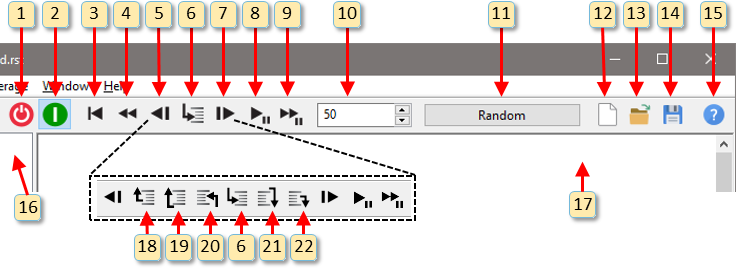
Fig. 8.1 The Reactis Simulator toolbar controls.#
Figure 8.1 contains an annotated screen shot of a portion of the top-level Reactis window when Simulator is enabled. Some of the buttons and pull-down menus on the leftmost part of the window have been elided; The Reactis Top-Level Window chapter contains descriptions of these items. The next section describes the labeled items in Figure 8.1, while the section following discusses the Simulator-related menu entries. The subsequent sections discuss the different modes for generating inputs during simulation, ways to track data values, how to monitor model coverage, importing and exporting test suites, and the different model highlighting styles used by Simulator.
8.1. Labeled Window Items#
Disable Reactis Simulator.
Enable Reactis Simulator.
Reset the simulation; the model is returned to the start state, and coverage information is appropriately reset.
Take n steps back, where n is specified by window item 10. Coverage information is updated appropriately upon completion of the last backward step.
Take one step back. Coverage information is updated appropriately.
Advance by one mini-step. In Simulink, a mini-step evaluates the next block in the evaluation order. In Stateflow, a mini-step evaluates the next transition segment condition or transition action. In C, a mini-step executes a single C statement, stepping into a function when at a function call.
Advance forward by one full step; that is, values are read on the harness inports, the model’s response is computed and values are written to the harness outports. If a step has been partially computed using the step-into button (window item 6), then execution picks up with the current partially computed step and continues until the end of the step, at which point values are written to the harness outports.
Execute n slow simulation steps, where n is specified by window item 10. The diagram in the main panel (window item 17) is updated during simulation to reflect the currently active Simulink block, Stateflow state / transition, or C statement. When Coverage > Show Details is selected, coverage targets will change from red to black as they are covered during the simulation run. If a single test is selected and the end of the test is reached before n steps execute, then simulation stops. When executing multiple tests (including an entire suite) the tests are executed one after another and simulation stops when n steps have executed or the end of the test suite is reached.
When a slow simulation is running, clicking this button pauses the simulation.
Execute n fast simulation steps, where n is specified by window item 10. The diagram in the main panel (window item 17) is not updated while the simulation is in progress but is updated when simulation halts. If the end of the current test or test suite is reached then simulation halts.
When a fast simulation is running, clicking this button pauses the simulation.
This window item determines how many steps are taken when buttons corresponding to window items 4, 8 , or 9 are clicked. When the Source-of-Inputs dialog (window item 11) is set to a test or test suite, the number of steps may be set to 0 to indicate that the entire test or test suite should be executed.
The Source-of-Inputs dialog determines what values are fed into inports to drive a simulation: random values, values from the user, or values from a test. See the Specifying the Simulation Input Mode section for details.
Create a new, empty test suite. The name of the .rst file containing the suite is initially “unnamed.rst” and is displayed in the title bar of the Reactis window.
Open a dialog for selecting a test suite (.rst file) to be loaded into Simulator. After it is loaded, the test suite’s name is displayed in the title bar, and the tests are listed in the Source-of-Inputs dialog (window item 11).
Save the current test suite.
View Reactis Simulator help.
The model hierarchy panel (not shown explicitly) supports the structure-based navigation of a model, as described in the Labeled Window Items section. Right-clicking on an item in the navigation panel brings up a menu that also allows you to view data items and set breakpoints. Data viewing is covered in more detail in the Tracking Data-Item Values section. Breakpoints may be set by right-clicking on a subsystem or Stateflow state in the hierarchy panel and selecting Toggle Breakpoint. The name in the hierarchy panel is then decorated with a “stop sign” icon
 . When a subsystem breakpoint is set, simulation pauses whenever an item in the subsystem (Simulink block or Stateflow transition) executes. When a Stateflow state breakpoint is set, simulation pauses whenever the state is entered or exited.
. When a subsystem breakpoint is set, simulation pauses whenever an item in the subsystem (Simulink block or Stateflow transition) executes. When a Stateflow state breakpoint is set, simulation pauses whenever the state is entered or exited.
The main panel displays the currently selected Simulink or Stateflow diagram, C code if you are using the Reactis for C Plugin or Embedded MATLAB code if you are using the Reactis for EML Plugin. You may interact with the diagram in a number of different ways using the mouse including hovering over model items, double-clicking on items, or right-clicking in various parts of the panel. The Labeled Window Items section describes how you interact with the main panel when Simulator is disabled. The mouse operations available when Simulator is enabled can be found in the Reactis Main Panel section.
The following five labeled window items are only available in the toolbar if you are using the Reactis for C Plugin to step through C code.
Step backward to the point just before the current function was called.
Step backward one statement. Any function calls performed by the statement are stepped over.
Step backward one statement. If the statement performed any function calls, stop at the end of the last function which was called.
Step forward one statement. Any function calls performed by the statement are stepped over.
Advance until the currently executing function returns.
8.3. Reactis Main Panel#
The main panel (window item 17) displays the currently selected Simulink subsystem or Stateflow diagram. C code or EML code may also be displayed in the main panel if you are using Reactis for C Plugin or the Reactis for EML Plugin. You can use the mouse to interact with the diagram in a number of different ways, including hovering over model items, single- or double-clicking on items, and right-clicking in various parts of the panel. Note that some operations in the main panel are only available when Simulator is enabled. The following sections describe mouse operations available when Simulator is enabled.
8.3.1. Hovering#
- Hovering…
over a data item (Simulink block or signal line, Stateflow variable, or C variable) will display its current value and type.
over a Goto block will cause it and its associated From block(s) to be highlighted in yellow.
over a From block will cause it and its associated Goto block to be highlighted in yellow.
over any Tester coverage target will display the test and step within the test during which the target was first executed. This information is presented in a message of the form “Covered: test/step”. A “.” in the test location indicates the current simulation run. “-/-” indicates the target has not yet been covered. For more details on querying coverage information see the Tracking Model Coverage section, The Reactis Coverage Report Browser chapter, and the Reactis Coverage Metrics chapter.
over a Validator objective will cause its wiring information to be drawn in blue.
over an output of a Logical Operator block that roots a multi-block decision coverage group will cause blue lines to be drawn to the conditions of the group (when multi-block decision coverage is enabled). See the Decision, Condition, MC/DC and MCC Metrics section for a description of Multi-block decision coverage.
8.3.2. Double-Clicking#
- Double-Clicking…
on a Scope block will open a scope window for that block (see the Scopes section).
on a Display block will add that block as a watched variable (see The Watched-Variable List section).
on a From or Goto block will open a dialog listing all other From or Goto blocks in the model associated with the block.
on a Data Store Memory, Data Store Read, or Data Store Write block will open a dialog listing all matching Data Store blocks.
on a Simulink subsystem will cause the subsystem diagram to be displayed in the main panel.
on a Stateflow state will cause the state’s diagram to be displayed in the main panel.
on a harness input port while running in user-guided simulation mode will bring up a panel to modify that inport’s current input value.
on a configuration variable in the Configuration Variable Panel (see the Configuration Variable Panel section) while Simulator is in the initial state (no simulation steps have been taken) will bring up a panel to modify the variable’s current value.
on a line number within a C source file will toggle a breakpoint on that line.
on any other Simulink block will display the block’s parameters.
8.3.3. Right-Clicking#
- Right-Clicking…
Causes different pop-up menus to be displayed. The contents of the menus vary based on where the click occurs and whether or not Simulator is enabled. A summary of the menu items available when Simulator is enabled follows. For descriptions of the menu entries available when Simulator is disabled, see the Labeled Window Items section.
Right-Click Location |
Menu Entries (when Simulator is enabled) |
|---|---|
Simulink signals, Simulink blocks, Stateflow variables |
|
User defined target or assertion |
|
Logical Operator block, Lookup Table, harness Inport, non-else outport of If block, or Stateflow transition segment, Stateflow state |
|
Simulink blocks |
|
Logical Operator block, Branching block, Lookup table, harness Inport, Stateflow transition segment, Stateflow state, or a test/step within a Coverage Details dialog |
|
Configuration variable in Configuration Variable Panel (see the Configuration Variable Panel section) |
|
Harness outport. |
|
Non-virtual Simulink block or Stateflow transition |
|
Simulink subsystem |
|
8.3.4. Left-Clicking on Signals#
- Left-Clicking on Signals…
Causes the signal wire to be highlighted in yellow. The highlighting travels in both directions: back to its block source and forward to one or several block destinations. To make it easy to identify the relevant signal path, the subsystems the signal penetrates are highlighted as well. The signal highlighting will travel through virtual blocks such as Subsystems, Froms, Gotos, Inports, Outports, Data Store Reads, Data Store Writes, Bus Creators, and Bus Selectors. To continue tracing a signal through a block, click on the wire on the non-highlighted side of the block. To remove signal highlighting, left-click the mouse button in empty space.
8.4. Creating Test Execution Reports#
Simulate > Fast Simulation Run with Report executes all tests in the current test suite and produces a report which lists all runtime errors (divide-by-zero, overflow, memory errors, missing cases, assertion violations, etc.) and significant differences between outport values stored in the test suite and those computed by the model.
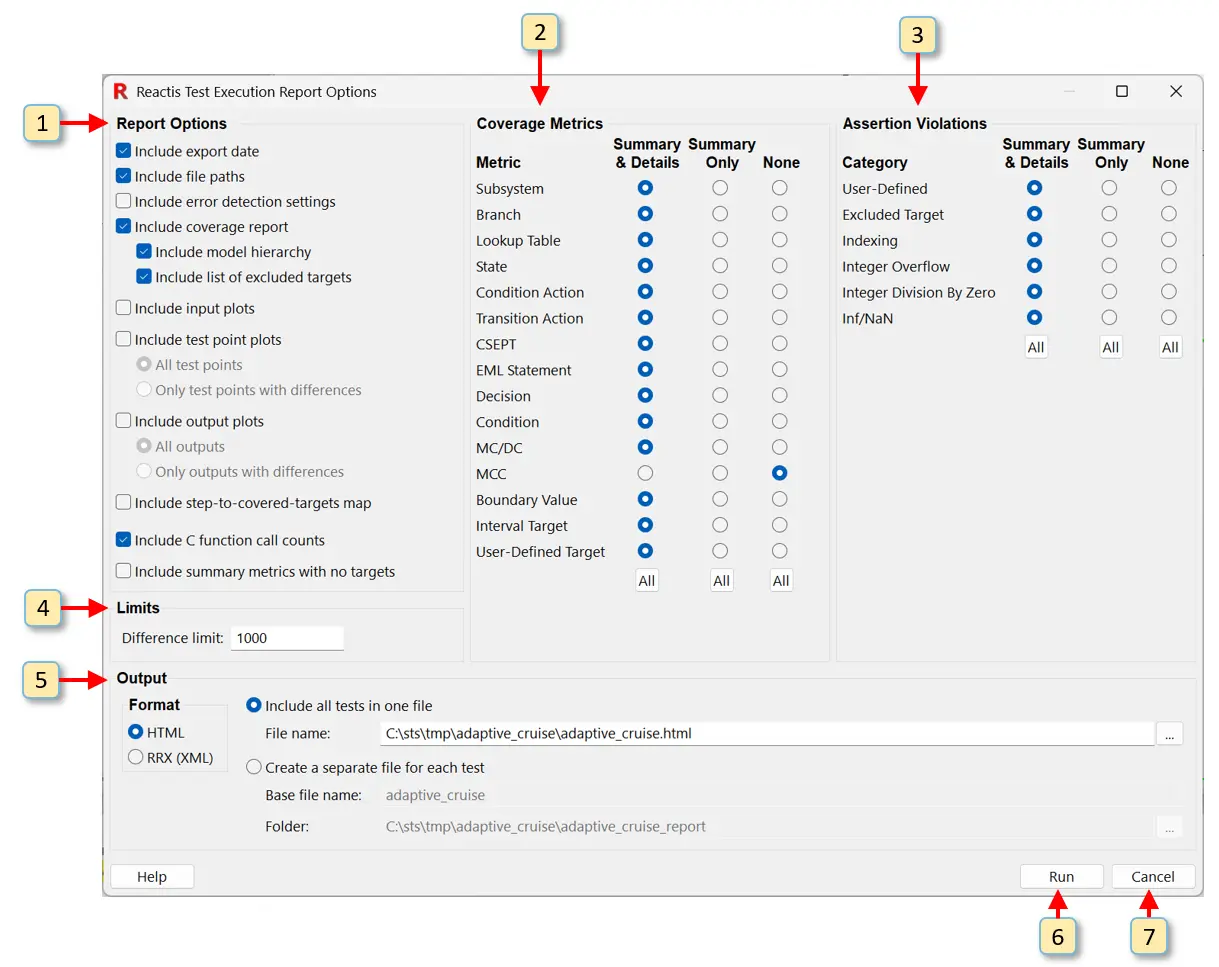
Fig. 8.2 The Reactis Test Execution Report Options dialog is used to select which items appear in a test execution report.#
Selecting Simulate > Fast Run with Report… causes the dialog shown in Figure 8.2 to appear. This dialog lets you select the items which will appear in the report. The following items are labeled in Figure 8.2:
The Report Options panel is used to select optional report items. These include the date, pathnames of input files, coverage information, and plots of test data. If file paths are included in the report, the model version will also be included within parentheses following the model name. By default, the version number is the return value after calling the MATLAB function:
get_param('modelName','ModelVersion');
where modelName is the name of your model. If you wish to include a different version number, you can redefine the workspace variable reactis_model_version in the Reactis Post-Load Function. For example, when your model is loaded, select Edit > Callbacks…, then in the Post-Load entry box enter:
reactis_model_version = my_function_to_construct_version();
If Include step-to-covered-targets map is selected, then the generated report will include a table similar to that shown below for each test. The table lists each step in the test that covers some target (for the first time) along with the targets covered by the step.
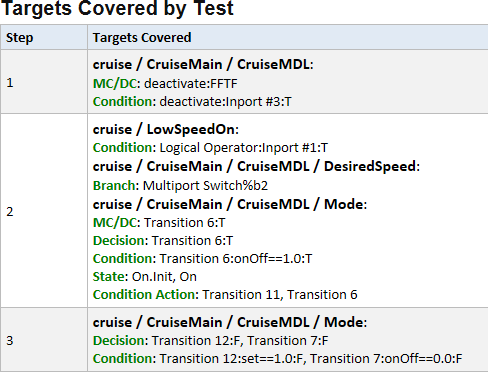
If Include C function call counts is selected, then the generated report will include a table of the call counts for every C function.
The test execution report optionally includes a coverage section that reports the coverage status of targets in the model after executing a test suite. For each subsystem in the model, the report includes a summary section giving statistics for coverage targets in the subsystem and its descendants. If Include summary metrics with no targets is checked, then these tables will include a row for all coverage metrics, even those which have no targets in the subsystem. If Include summary metrics with no targets is not checked, then metrics with no targets are omitted from the table, making the report more compact and readable.
When Include coverage report is selected in the Report Options section, the Coverage Metrics section is used to select which coverage metrics are included in the test execution report. There are three choices for each metric:
Summary & Details. Targets of the metric will appear in both the coverage summary and coverage details sections of the report.
Summary Only. Targets of the metric will appear in the coverage summary only.
None. Targets of the metric will be omitted from the report entirely. Note that due to dependencies between metrics, some combinations are not allowed. For example, Summary & Details cannot be selected for condition targets unless Summary & Details is also selected for decision targets.
When Include coverage report is selected in the Report Options section, the Assertion Violations section is used to select which categories of assertion are included in the test execution report. There are three choices for each category:
Summary & Details. Targets of the metric will appear in both the coverage summary and coverage details sections of the report.
Summary Only. Targets of the metric will appear in the coverage summary only.
None. Targets of the metric will be omitted from the report entirely.
The Output Format panel is used to select the format of the exported report (HTML or RRX/XML). If Preview before saving is checked, the exported report will be displayed and you will have the option of saving or discarding it.
The Output panel is used to specify where the report will be stored. A test execution report can be stored in a single file, or it can be stored in multiple files (one file per test).
When you are satisfied with the selected report options, clicking on this button will close the dialog, start the simulation run, and generate the report.
Clicking on this button will close the dialog without initiating a simulation run or generating a report.
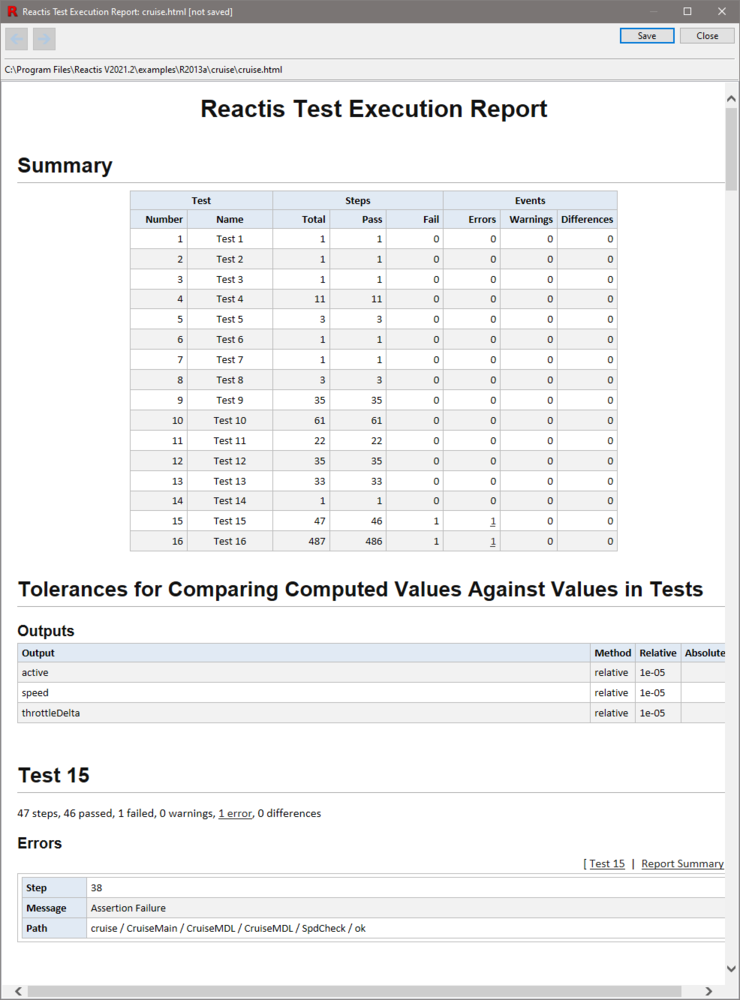
Fig. 8.3 A test execution report can be generated by loading a test suite in Simulator and selecting Simulate > Fast Run with Report…#
Once the simulation run begins, it does not stop until all tests have been executed. During each test, if a runtime error is encountered, the remaining steps of the test are skipped and Simulator continues execution with the following test. After the last test is executed, a window containing the test execution report will appear, as shown in Figure 8.3. An HTML version of the report can be saved by clicking the Save button in the report window.
An HTML test execution report will contain some or all of the following sections, depending on which options are selected:
A report header listing the data, input files, Reactis version, etc.
A test summary listing the tests/steps which were executed and the number of errors and differences detected for each test. Non-zero error and difference totals can be clicked-on to jump to a detailed description of the error or difference.
The tolerance used to test the value of each output and test point.
The error detection settings (e.g. integer overflow) used when generating the report.
A list of test details. For each test, includes the details for each error and difference that occurred, and plots of test data. The plots for a test are hidden by default, but they can be viewed by either clicking on the plus/minus symbol to the left of the signal name, or by clicking on Open all. See the Test Data Plots section for details.
The model hierarchy. The name of each member of the hierarchy can be clicked on to jump to the coverage details for that member.
Coverage details for each component of the model. The coverage details for a model component begin with a summary of the local and cumulative coverage, followed by details for each metric. The details for a metric show, for each target, whether or not the target was covered, and if the target was covered, the test step when coverage occurred. The contents of this section are identical to a coverage report (the Coverage Report Contents section).
8.4.1. Test Data Plots#

Fig. 8.4 An output plot from a test execution report.#
Figure 8.4 shows a typical plot from a test execution report. Test data (inputs, outputs, or test points) are plotted with the simulation time on the x-axis and the data value(s) on the y-axis. For outputs and test points, two values are shown: the test value (green), and the computed value (blue). The test value is the value stored in the test being executed for the output. The computed value is the value computed by the model for the output while executing the test. The acceptable tolerance between the two values is shaded yellow. Regions where the difference between the two signals is larger than the tolerance are shaded red.
Plots can be inspected when viewing the report in a web browser. The current focus of inspection is indicated by the intersection of two gray dashed lines. The focus can be moved either by the mouse, or the left and right arrow keys on the keyboard. Pressing S will move the focus to the start of the plot, and pressing E will move the focus to the end.
There are six values[2] displayed at the top of the plot for the current focus. These are (1) the step number, (2) the simulation time, (3) the test value (y value of green line), (4) the computed value (y value of blue line), (5) the difference between the test value and the computed value, and (6) the maximum difference between the test and computed values which is tolerated. These six values are updated whenever the focus is moved.
8.5. Specifying the Simulation Input Mode#
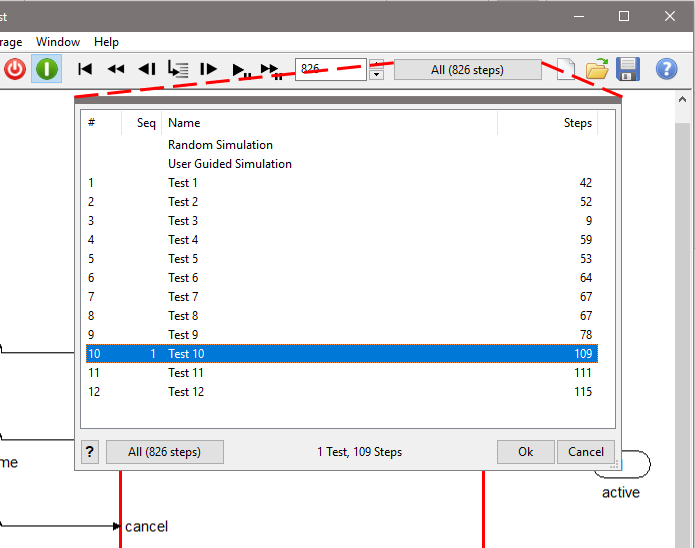
Fig. 8.5 You to specify how Simulator computes input values with the Source-of-Inputs dialog.#
Reactis Simulator performs simulations in a step-by-step manner: at each simulation step inputs are generated for each harness inport, and resultant outputs reported on each harness outport. You can control how Simulator computes input values using the Source-of-Inputs dialog (window item 11 in Figure 8.1) shown in Figure 8.5. This dialog always includes the Random Simulation and User Guided Simulation entries; if a test suite has been loaded, then the dialog also includes an entry for each test and the All button becomes enabled. The dialog is used to specify how input values are generated as follows.
- Random Simulation.
For each inport, Reactis randomly selects a value from the set of allowed values for the inport, using type and probability information contained in the associated .rsi file. See The Reactis Info File Editor chapter for a description of how to enter this information using the Reactis Info File Editor.
- User Guided Simulation.
You determine the value for each inport using the Next Input Values dialog, which appears when the User Guided Simulation entry is selected. See the User Input Mode section below for more information on this mode.
- Individual Tests.
When a test suite is loaded, each test in the suite has a row in the dialog that contains a test number, a sequence number, a name and the number of steps in the test. Selecting a test and clicking OK will cause inputs to be read from the test.
- Subset of Tests.
You may specify that a subset of tests should be run by holding down the control key and clicking on each test to be run with the left mouse button. You can also hold the shift key while clicking to select a block of tests to be executed. The tests will be run in the order they are selected. As tests are selected, the sequence number column is updated to indicate the execution order of the tests. When a new test is started, the model is reset to its starting configuration, although coverage information is not reset, thereby allowing you to view cumulative coverage information for the subset of tests.
- All Tests.
Clicking the All button in the lower left corner specifies that all tests in the suite should be executed one after another. The tests are executed sequentially. When a new test is started, the model is reset to its starting configuration, although coverage information is not reset, thereby allowing you to view cumulative coverage information for the entire test suite. The Test Input Mode section contains more information on this mode. You can change the sorting order of the tests in the table by clicking on the column headers. For example, to sort the tests by the number of steps, simply click on the header of the “Steps” column. Clicking again on that header will sort by number of steps in descending order.
You may also use the Inputs Source dialog to change the name of a test. To do so, select the test by clicking on it, then click on the name and, when the cursor appears, type in a new name.
8.5.1. User Input Mode#
When the User Guided Simulation mode is selected from the Source-of-Inputs dialog, you provide values for inports at each execution step. This section describes how this is done.
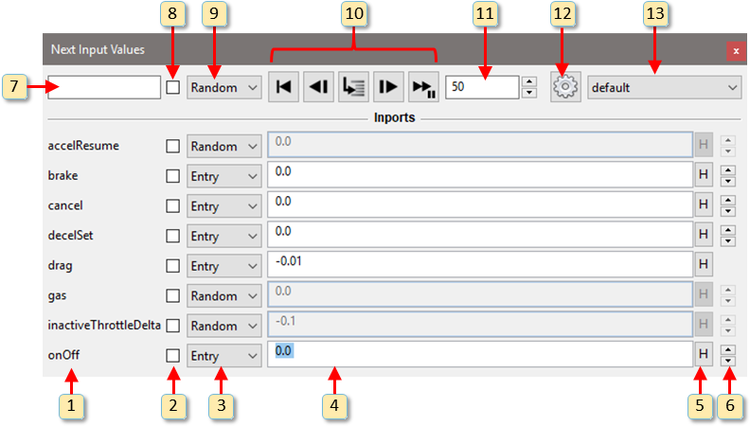
Fig. 8.6 The Next Input Values dialog lets you control the simulation by specifying the next value for inputs (item 4) and clicking the stepping buttons (item 10).#
To enter the user-guided mode of operation, select User Guided Simulation
from the Source-of-Inputs dialog (window item 11 in Figure 8.1). Upon selecting user-guided mode, a Next Input Values
dialog appears, as shown in Figure 8.6,
that allows you to specify the input values for the next simulation step.
Initially, each harness inport of the model has a row in the dialog. You can
remove inputs from the dialog or add outputs, test points, and configuration
variables by clicking the gear button  in the
toolbar of the Next Input Values dialog. Each row in the dialog contains 6
items (labeled 1-6 in Figure 8.6). The
toolbar for the dialog contains items 7-13. The elements of the dialog work as
follows:
in the
toolbar of the Next Input Values dialog. Each row in the dialog contains 6
items (labeled 1-6 in Figure 8.6). The
toolbar for the dialog contains items 7-13. The elements of the dialog work as
follows:
The name of an item (inport, outport, test point, or configuration variable).
This checkbox toggles whether the item is included in a scope displaying a subset of the signals from the Next Input Values dialog.
This pull-down menu has two entries that determine how the next value for the port is specified:
- Random
Randomly select the next value for the inport from the type given for the inport in the .rsi file.
- Entry
Specify the next value with the text-entry box in column four of the panel.
- Min
Use the minimum value allowed by the inport’s type constraint.
- Max
Use the maximum value allowed by the inport’s type constraint.
- Test
Read data from an existing test suite (see the Reading Data from Existing Test Suites section).
If the pull-down menu in column three is set to Entry, then the next input value is taken from this text-entry box. The entry can be a concrete value (e.g. integer or floating point constant) or a simple expression that is evaluated to compute the next value. These expressions can reference the previous values of inputs, the simulation time, or the current values of other inputs. For example, a ramp for input drag can be specified by
pre(drag) + 0.0001. A sine wave can be generated bysin(t) * 0.001. If \(x\) should always be the opposite of \(y\), this can be generated by setting the entry for \(x\) to be!(y). For the full description of the expression notation see the Syntax of Next Input Value Expressions section below.If the pull-down menu in column three is set to Entry, then clicking the history button (labeled H) displays recent values the inport has assumed. Selecting a value from the list causes it to be placed in the text-entry box of column four.
The arrow buttons in this column enable scrolling through the possible values for the port. The arrows are available for inports or configuration variables: having a base type of integer, boolean or fixed point; or having a base type of double or single and either a resolution or subset of values constraint.
When you enter a search string in this box, Reactis displays only the rows for items whose names contains the given search string.
When you check this box, all signals in the Next Input Values dialog are plotted in a scope. When you uncheck this box, all signals are removed from the scope and no scope is displayed.
This pull-down menu sets the input mode for all inports at once to either Random, Entry, Min, Max, Test, or Zero. When Zero is selected, each inport is set to Entry with a value of zero.
These buttons control the simulation stepping exactly as they do in the top-level main Simulator window.
The entry in this box is a positive integer which specifies how many steps to take when clicking one of the stepping buttons that triggers multiple steps (e.g. fast simulation button).
Open a dialog to select the set of signals (inputs, outputs, test points, configuration variables) to be included in the Next Input Values dialog.
Save the current configuration of the Next Input Values dialog for future use or load a previously saved configuration.
When the run fast simulation button (window item 9 in Figure 8.1) is clicked, the inport value specifications in the Next Inputs Values dialog are used for each step in the simulation run.
8.5.1.1. Syntax of Next Input Value Expressions#
The value an input should assume in the next simulation step can be specified from its row by selecting Entry in column 3 and then entering an expression in the box in column 4. We now describe the language used to define an expression.
Assume foo and bar are inputs. Then the following examples demonstrate some possible expressions to specify the next value of foo.
Expression |
Value foo will have in next step |
|---|---|
4.0 |
4.0 |
pre(foo) |
The value foo had in the previous step |
pre(foo,2) |
The value foo had two steps back |
pre(foo) + 1 |
Add 1 to the value of foo in the previous step |
pre(u) |
Shorthand denoting the value of foo in the previous step |
t |
The current simulation time |
sin(t) |
The sine of current simulation time (i.e. generate a sine wave) |
!(bar) |
If bar is true then foo is false, otherwise foo is true. |
The complete syntax of a next input value expression NIV is specified by the following grammar.
NIV |
: |
numericConstant | |
Constant value |
| |
inportName |
Name of an input |
|
| |
|
Shorthand for current input (must be within |
|
| |
|
Go one step back when retrieving values for inputs in NIV |
|
| |
|
Go n steps back when retrieving values for inputs in NIV |
|
| |
|
Simulation time |
|
| |
NIV relOp NIV |
Relational operator |
|
| |
|
Logical not |
|
| |
NIV |
Logical and |
|
| |
NIV |
Logical or |
|
| |
\(-\) NIV |
Negation |
|
| |
NIV arithOp NIV |
Arithmetic operation |
|
| |
function ( NIVL ) |
Function call |
|
| |
|
Matrix |
|
| |
|
Record |
|
| |
NIV . fieldName |
Access field of record |
|
| |
|
If then else |
|
| |
( NIV ) |
Parentheses |
|
relOp |
: |
|
|
arithOp |
: |
|
|
field |
: |
fieldName = NIV |
|
function |
: |
testval_step | testval_time |
Read data from test suite (see below) |
| |
port() |
Name of the input port whose value is being specified by this expression |
|
| |
step() |
Current step number within the test being constructed |
|
| |
abs | fabs |
Absolute value |
|
| |
sin | cos | tan | asin | acos | atan | atan2 | sinh | cosh |
Trigonometric functions |
|
| |
floor | ceil |
Rounding functions |
|
| |
hypot(a,b) |
Calculate length of hypotenuse c, if a and b are lengths of non-hypotenuse sides of right triangle. |
|
| |
ln | log | log10 | pow | exp |
Log and exponent functions |
|
| |
rem | sgn | sqrt |
||
NIVL |
: |
list of NIV delimited by |
|
rowL |
: |
list of NIVL delimited by |
|
fieldL |
: |
list of field delimited by |
8.5.1.2. Reading Data from Existing Test Suites in Expressions#
Within the expression for specifying the next input value for a port the testval_step and testval_time functions can be used to read values from an existing test suite.
testval_step(suitefilename, portname, testnum, stepnum)
Reads a value from a test suite, specified by the step number within the test suite.
- testsuitefilename
The file name of the test suite from which data should be read. If a relative path is used then it is relative to the directory in which the current model resides. Must be enclosed in double-quotes.
- portname
The name of the port from which data should be read. This can be an input port, test point or output port, as they appear in the Reactis Test Suite browser. You can use the function
port()here to use the same name as the port whose input you are specifying. The name must be enclosed in quotes.- testnum
The number of the test in the test suite from which data should be read. This number is 1-based, i.e. first step is 1.
- stepnum
The step number within the test. Use the
step()function to refer to the current simulation step. You can use arithmetic expressions to adjust the step number, for example to add an offset.
Example: testval_step("cruise.rst", "onOff", 3, step()+5) will read data from the 3rd test of test suite cruise.rst, port onOff, offset by 5 steps, i.e. the first step read from the test suite will be step 6.
testval_time(suitefilename, portname, testnum, time, interpolate)
Reads a value from a test in a test suite at the specified simulation time.
- testsuitefilename
The file name of the test suite from which data should be read. If a relative path is used then it is relative to the directory in which the current model resides. Must be enclosed in double-quotes.
- portname
The name of the port from which data should be read. This can be an input port, test point or output port, as they appear in the Reactis Test Suite browser. You can use the function “port()” here to use the same name as the port whose input you are specifying. The name must be enclosed in quotes.
- testnum
The number of the test in the test suite from which data should be read. This number is 1-based, i.e. first step is 1.
- time
The simulation time within the test. Use “t” to refer to the current simulation model time. You can use arithmetic expressions to adjust the time value, for example to add an offset or scaling.
- interpolate
If the time value specified falls between the time for two steps in the test suite then this parameter defines how the value is computed. If the interpolate parameter is 0 then the value from the test suite corresponding to the step before the time value is used. If interpolate is 1 then the value is interpolated (linear) between the steps before and after the simulation time.
Example: testval_time("cruise.rst", port(), 4, t/10, 1) will read data from the 4th test of test suite cruise.rst matching the current port name. Time will be slowed down by factor 10 and values will be interpolated between steps.
8.5.1.3. Select Signals Dialog#
The Select Signals dialog lets you choose which signals to include in the Next Input Values dialog during user-guided simulation. Initially all harness inputs are included, but you can remove inputs or add outputs, test-points, and configuration variables by clicking the  button in the Next Input Values dialog and then using the Select Signals dialog to specify the desired subset of signals. Note that in the case of outputs and test points the signal values are only observed, not controlled.
button in the Next Input Values dialog and then using the Select Signals dialog to specify the desired subset of signals. Note that in the case of outputs and test points the signal values are only observed, not controlled.
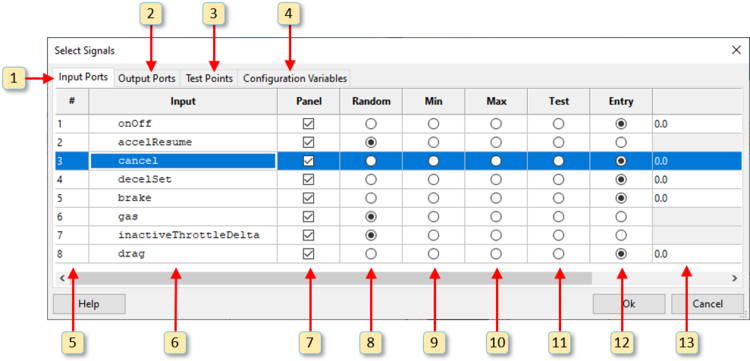
Fig. 8.7 The Select Signals dialog lets you choose the subset of signals to include in the Next Input Values dialog during user-guided simulation.#
The labeled items in Figure 8.7 work as follows. Note that since outputs and test points are only observed and not controlled, those tabs include only a subset of the columns described below.
This tab lets you select harness inputs.
This tab lets you select harness outputs.
This tab lets you select test points.
This tab lets you select configuration variables.
Port number.
Signal name.
Toggles whether or not the item is included in the Next Input Values dialog.
Generate a random next input value.
Generate the smallest allowed next input value.
Generate the largest allowed next input value.
Reads a value from an existing test suite (see the Reading Data from Existing Test Suites section).
Use an expression in item 13 to specify the next input value.
An expression used to generate the next input value.
Note that if item 7 is checked for an input, then the settings specified by items 8-10 will determine the initial configuration of the Next Input Values when it is first opened. The settings can subsequently be modified while stepping. If window item 7 is not checked for an input, then the settings specified by items 8-10 will be the only ones used during stepping.
8.5.1.4. Reading Data from Existing Test Suites#
In user-guided simulation mode you can set up any number of inputs to read data from one or more existing test suites:
To set all inputs to receive data from the same test suite, either select the “Test” entry in the “all ports” drop-down box in the Next Input Values window (item 9 in Figure 8.6) or click on the header of the “Test” column in the Select Signals dialog (item 11 in Figure 8.7).
To set a single input to receive data from a test suite, either select the “Test” entry in the drop-down box for the desired input in the Next Input Values window (item 3 in Figure 8.6) or click the radio button in the “Test” column for the desired input in the Select Signals dialog (item 11 in Figure 8.7).
To set a range of inputs to receive data from the same test suite, open the Select Signals dialog (Figure 8.7) and click in the “Test” column of the first input to be set to a test. Make your selections in the test selection dialog (see below) and click OK. Then hold down the shift key and click the last input to be set to a test, which will again bring up the test selection dialog, pre-configured with your previous selection. Click the OK button again.
Doing any of the above will bring up the dialog shown in Figure 8.8, the labeled items work as follows.
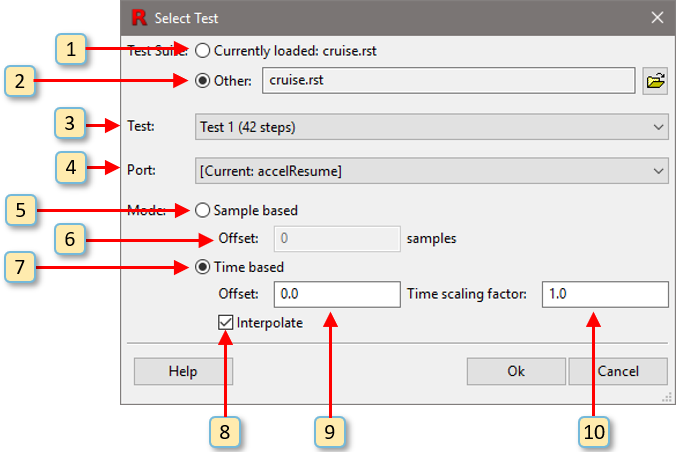
Fig. 8.8 Selecting data to be read from a test suite.#
Test data will be read from the test suite currently loaded in Simulator. Note that the test suite must be saved before it can be selected here.
Test data will be read from the test suite selected here.
Selects the test from which data will be read
Data item (input port, output port, configuration variable or test point) in the test suite that the data will be read from. If set to “[Current]” then data will be read from the port in the test suite whose that matches the current port name. This choice is disabled when selecting test data for multiple inputs.
If this mode is selected then data will be read from the test suite on a step-by-step basis, disregarding simulation time. This mode is more efficient and avoids possible rounding errors if the sample rate of the model and the data in the test suite are identical. If test data is read for steps past the end of the test data, the last step value will be repeated.
This allows to set an offset to the step number in the test suite. For example, if set to 5 then the first step read from the test suite will be step number 6. If this is a negative value then the data read before step 1 will be the same as the data for step 1.
If this mode is selected then data will be read from the test suite based on the current simulation time. This is useful if either the sample rate of the test data does not match the model’s sample rate or to perform time scaling (see below).
If this is checked and the time from which data is to be read from the test falls between two time steps in the test suite then linear interpolation will be used to calculate the test data value. If this is not checked then the data from the previous step in the test suite will be used. This also influences the behavior if test data is read for time less than zero or past the end of the test. If checked then the two first or last steps in the test data are used to extrapolate the test data value for the given time. Otherwise the test data for the first or last step is used.
Provide a time offset when reading data from the test suite. This value will be added to the current simulation time to determine the time for which data is read from the test suite.
Provide a time scaling when reading data from the test suite. The current simulation time will be multiplied by this value (before adding the offset) to determine the time for which data is read from the test suite. This allows to speed up or slow down time. For example, if set to 0.5 then data from the test suite will be read at half the speed at which the model simulation time progresses.
Note that this dialog is meant to provide a more user-friendly way to specify the parameters to the testval_step() and testval_time() functions described above in the Reading Data from Existing Test Suites in Expressions section. Using the functions directly will provide more flexibility in how to read test data. If you set up a port to read data from a test using this dialog and subsequently switch the test data selector (item 3 in Figure 8.6) to “Entry” then you will see the function expression that was constructed to reflect your dialog choices.
8.5.2. Test Input Mode#
Simulation inputs may also be drawn from tests in a Reactis test suite. Such tests may be generated automatically by Reactis Tester, constructed manually in Reactis Simulator, or imported using a comma separated value file format. By convention files storing Reactis test suites have names suffixed by .rst.
A Reactis test suite may be loaded into Simulator by clicking the  in the tool bar to the right of Source-of-Inputs dialog (window item 13 in Figure 8.1) or by selecting the Test Suite > Open… menu item.
in the tool bar to the right of Source-of-Inputs dialog (window item 13 in Figure 8.1) or by selecting the Test Suite > Open… menu item.
When a test suite is loaded, the name of the test suite appears in the Reactis title bar and the tests of the suite are listed in the Source-of-Inputs dialog.
When executing in test input mode while Test Suite > Compare Outputs is selected, Simulator compares the values computed by the model for test points and harness output ports against the values stored in the test suite for those items. These comparisons are performed after each simulation step. A difference is flagged if it exceeds the tolerance specified for that port. See the Outports Pane section for more information on specifying tolerances for output ports.
If a value in the test differs from that computed by the model for a harness outport, the difference may be observed (as shown in Figure 8.13) by right-clicking on the outport and selecting Open Difference Scope.
8.6. Tracking Data-Item Values#
Reactis Simulator includes several facilities for interactively displaying the values that data items (Simulink blocks or signal lines, Stateflow variables, or C variables) assume during simulation. The watched-variable list, or “watch list” for short, displays the current values of data items designated by the user as “watched variables.” You may also attach scopes to data items in order to display values as they vary over time. Scopes behave like Simulink Scope blocks except that they are not hard-wired into models and are instead opened and closed during simulation. Distribution scopes enable you to view the set of values a data item has assumed during simulation (but not the time at which they occur). Difference scopes may be opened for harness outports when reading inputs from a test in order to plot the values computed by the model against the values stored in the test for the outport.
You may add data items to the watch list, or attach scopes to them, as follows.
- Using the View menu.
The View menu contains operations for adding data items to the watch list, opening scopes, and opening distribution scopes. These are described in more detail in the Menus section.
- Using pop-up menus in the model hierarchy panel.
Right-clicking on a subsystem in the hierarchy panel brings up a pop-up menu that includes the entries:
Add Watched Variables…
Open Scopes…
Open Distribution Scopes…
Selecting one of these entries will cause a dialog to appear listing data items in the subsystem which may be added to the watched variable list or to which scopes may be attached.
- Using pop-up menus in the main panel.
Right-clicking on a data item in the main panel of Simulator invokes a menu that enables you to add the data item to the list of watched variables or open a scope or distribution scope to monitor the values of the data item during simulation. This menu also includes an entry Add To Scope that enables you to plot the data item on a previously opened scope.
You may save the current configuration of the data tracking facilities (the variables in the watch list and currently open scopes along with their locations) for use in a future Simulator session. Do so by selecting View > Save Profile As… and using the resulting file selection dialog to specify a file in which to save a Reactis profile (.rsp file). The profile may be loaded at a future time by selecting View > Load Profile….
8.6.1. Selecting Bus Components#
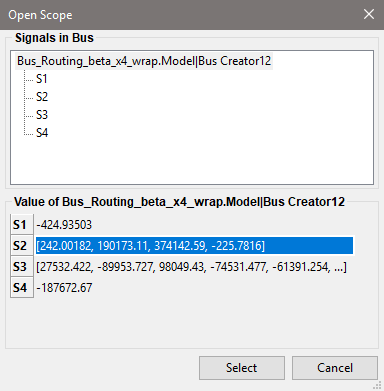
Fig. 8.9 Opening a scope on a bus component.#
When any of the standard value-inspection operations (Inspect value…, Add Watched Variables…, Open Scopes… , Open Distribution Scopes…) are applied to a bus, an intermediate menu appears which allows you to select a bus component of interest. An example of this is shown in Figure 8.9, where the second element of bus member S2 is about to be selected.
8.6.2. The Watched-Variable List#
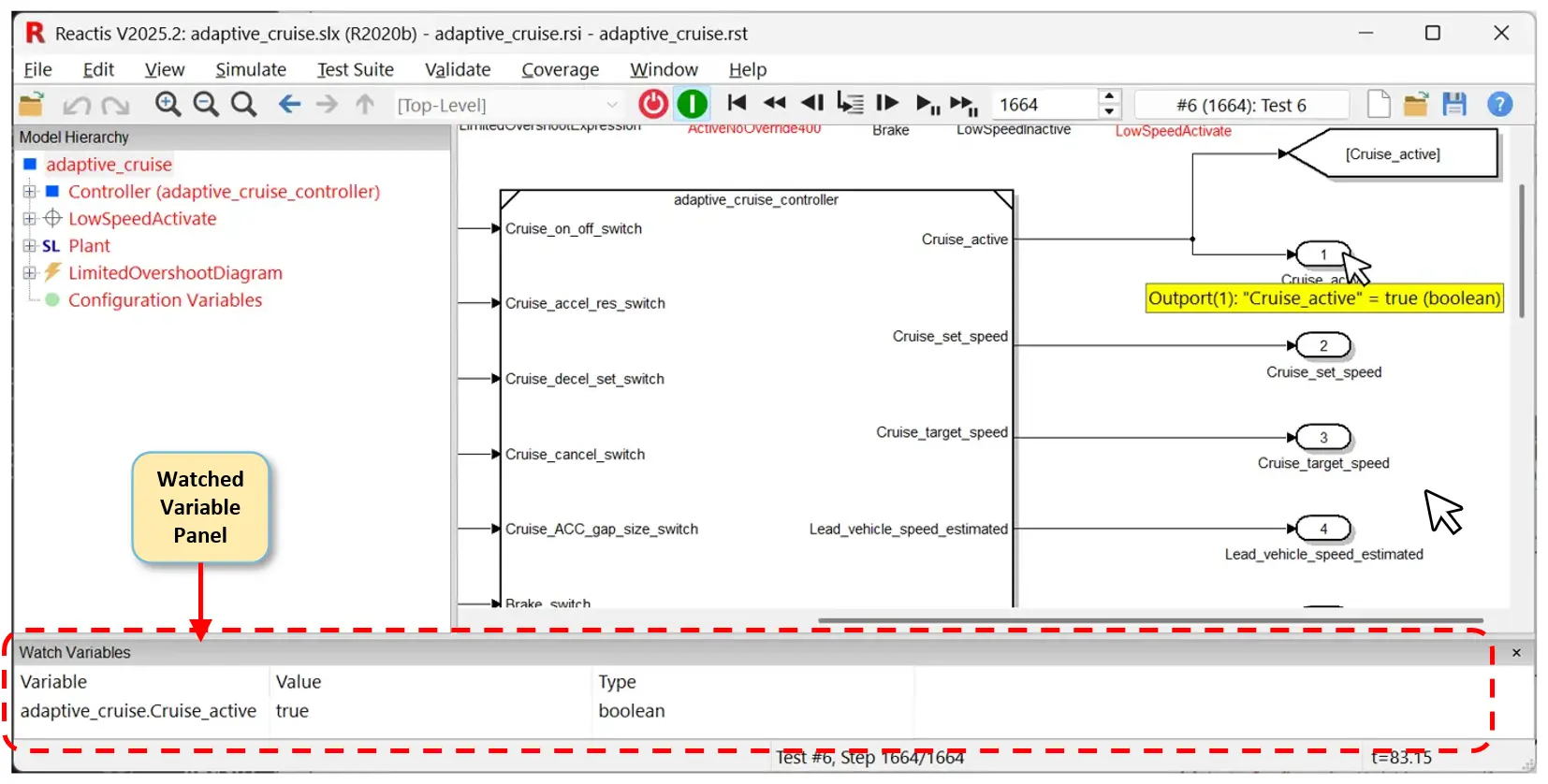
Fig. 8.10 The watched variable panel tracks the current values of data items.#
The watch list is displayed in a panel at the bottom of the Simulator screen as shown in Figure 8.10. By default this panel is hidden, although adding a variable to the watch list causes the panel to become visible. Visibility of the panel may also be toggled using the View menu as described in the Menus section. The panel displays a list of data items and their values. The values are updated when Simulator pauses.
The contents of the watch list may be edited using a pop-up menu that is activated from inside the watch-list panel. Individual data items in the panel may be selected by left-clicking on them. Once an item is selected, right-clicking invokes a pop-up menu that enables the selected item(s) to be deleted, have a scope opened, or have a distribution scope opened. If no item is selected, then these choices are grayed out. The right-click pop-up menu also includes an entry Add Variables which displays a list of all data items in the model which may be added to the watch list.
The View menu contains operations for displaying / hiding the watch list, adding data items to the watch list, clearing the watch list.
Right-clicking on a variable in the list brings up a menu containing the following options:
- Add Variables…
Same as View > Add Watched Variables…
- Remove Variable
Remove the currently selected variable from the list.
- Set Significant Digits
Specify the number of significant digits to display for the currently selected variable in the list. Specifying -1 will reset to the default number of digits.
Inspect Value…
- Add Component to Watched…
If the currently selected variable in the list is a vector, matrix or bus, selecting this menu item will bring up a selection dialog (see the Selecting Bus Components section) that allows you to add a sub-element of the current selection as a watched variable.
- Show Location
Highlights the location of the currently selected watched variable in the main panel.
- Open Scope
Opens a scope for the currently selected variable.
- Open Distribution Scope
Opens a distribution scope for the currently selected variable.
- Highlight updated entries
By default, Reactis highlights variables in the watched variable list if their values have changed. This sub-menu allows you to modify the highlighting behavior:
- Do not highlight
Never highlight any variables in the list
- Highlight when updated
Always highlight a variable when it is assigned a new value, even if the new value is the same as the previous value.
- Highlight when updated with different value
Highlight a variable if it is assigned a value different from its previous value. This is the default.
8.6.3. Scopes#
Scopes appear in separate windows, an example of which may be found in Figure 8.11. The tool bar of each scope window contains nine or more items.
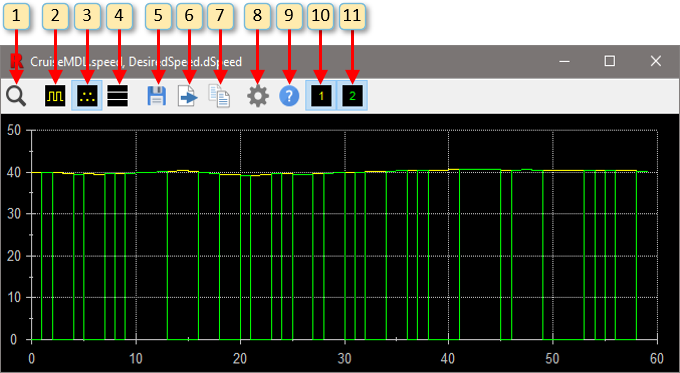
Fig. 8.11 A scope window plotting desired speed (green) and actual speed (yellow).#
8.6.3.1. Labeled Window Items#
Reset the zoom level of the scope to fit the whole plot (see more on zooming below).
Plot signal as solid lines.
Plot signal as points.
If a scope displays multiple signals, this button toggles whether or not all signals share the same y-axis or each is plotted on its own y-axis.
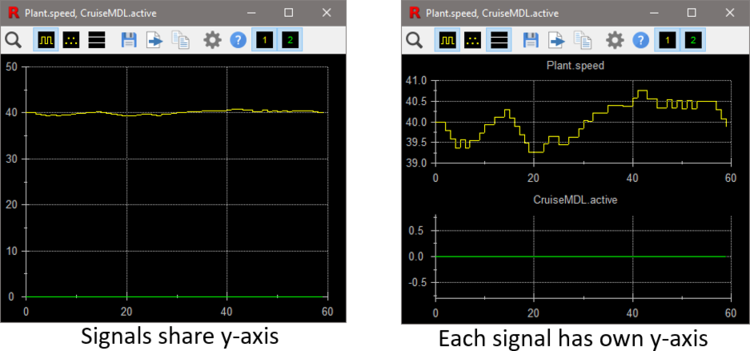
Save the current scope configuration as a signal group. A signal group is a set of signals along with the settings for displaying the signals in a scope. After saving a signal group, you can reopen a scope for the group in future Reactis sessions. You can add additional signals to a signal group by right-clicking on a signal in the main Reactis panel (when Simulator is enabled), selecting Add to Scope, and selecting the signal group to be extended. To reorder the signals in a group or remove a signal, open a scope for the signal group then click the Settings button (item 8).
Export scope data as either text (csv) or graphics (png, gif, bmp, tif or jpg).
Copy a screen shot of the scope to the clipboard.
Configure the scope settings, including reordering the signals or deleting a signal.
Display help for scopes.
Toggle display of signal 1.
Toggle display of signal 2.
To zoom in to a region of interest of the signal shown in the scope, left-click in a corner of the region, then hold the mouse button down and move the mouse to the diagonally opposite corner of the region. When the button is released, the selected region will be magnified to fill the scope window. To zoom out, either click the zoom-to-fit button in the toolbar or right-click in the scope window. Right-clicking will return the scope to the zoom level that was active before the current zoom was performed.
When zoomed in, it is possible to move the displayed region within the scope window. To move the region, hold down the CTRL key, click the left mouse button, and drag while holding the mouse button down.
If more than one data item is plotted on a scope, then a toggle button will appear in the tool bar for each data item (window items 10 and 11 in Figure 8.11). Turning one of these buttons off will hide the corresponding data item in the scope. Hovering over the button will display the data item to which the button corresponds.
8.6.4. Distribution Scopes#
Distribution scopes also appear in separate windows, an example of which may be found in Figure 8.12. The values a data item assumes are displayed as data points distributed across the X-axis. Zooming in distribution scopes works the same as in regular scopes.
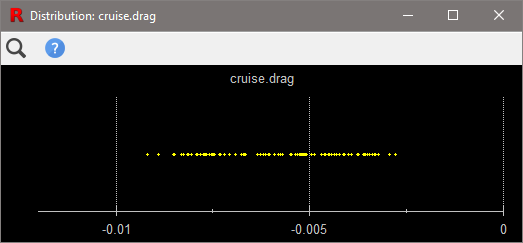
Fig. 8.12 Distribution scopes plot the values a data item has assumed during simulation.#
8.6.5. Difference Scopes#
When executing tests from a test suite, a difference scope may be opened by right-clicking on a harness outport and selecting Open Difference Scope. The resulting scope plots the expected value (from the test) against the actual value (from the model) as shown in Figure 8.13. If the difference between the two values exceeds the tolerance specified for the output port (see the Outports Pane section), then a red background in the difference scope and a red bar on the X-axis highlight the difference.
After zooming into an area of difference, white and yellow and green background regions around the plotted values highlight the tolerance, as shown in Figure 8.14. The green region represents the overlap between the tolerance of the test and model values. A difference is flagged whenever the test or model value lie outside of the green region.
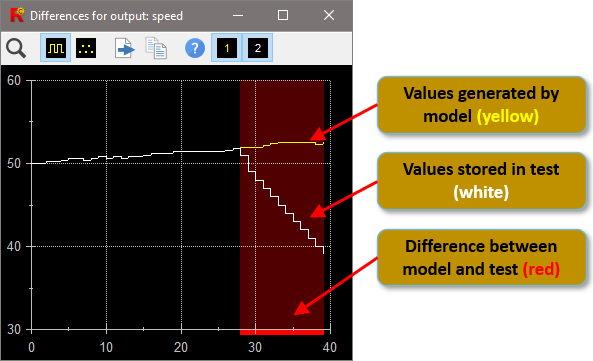
Fig. 8.13 A difference scope may be opened by right-clicking on a harness outport and selecting Open Difference Scope. The scope plots the values stored in a test for an output and the values computed by the model for the output. Differences are flagged in red.#
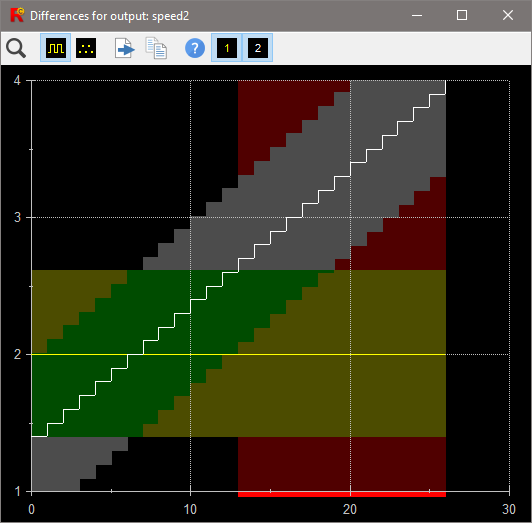
Fig. 8.14 The white and yellow colored backgrounds around the value lines highlight the tolerance intervals of the test and model values. The overlap between the yellow and white regions is colored green. If either the test or model value lie outside the green region, a difference is flagged.#
8.6.6. Non-Executed Blocks and Signals#
Some blocks may not be executed at all during a simulation step, either because they are located within conditional (i.e. triggered or enabled) subsystems that do not execute during the step or because of conditional input branch execution (see the Conditional Input Branch Execution section). Furthermore, when Simulator hits a breakpoint or while mini-stepping through a simulation step some blocks may not have been executed yet.
When hovering over a signal or if the output signal of a block is added as a watched variable, Reactis will show one of the following:
- not computed
means that that the block outputting the signal has not (yet) been executed during this simulation step.
- not fully computed
means that the signal consists of multiple elements (i.e. a bus or multiplexed signals) and at least one block whose output is part of the signal has not yet executed.
- value
If the signal has been computed then Reactis will show its value.
For technical reasons the following blocks will always show a value and never show “not computed”:
Top-level input ports
Merge blocks
Outputs of conditionally executed (i.e. triggered or enabled) subsystems
Virtual blocks (From/Goto, subsystem input ports, virtual buses) receiving their input from other blocks in this list.
In scopes, signals only show a trace for times at which they were computed.
Note that Reactis can be configured to always show the signal value by switching the “Indicate when signal values were not computed” setting in Edit > General to “Never”.
8.7. Tracking Model Coverage#
The Reactis Coverage Metrics chapter describes the coverage metric that Reactis employs for measuring how many of a given class of syntactic constructs or coverage targets that appear in a model have been executed at least once. Simulator includes extensive support for viewing this coverage information about the parts of the model that have been exercised by the current simulation run. If a test suite is being executed, the coverage data is cumulative. That is, all targets covered by the portion of the current test executed so far, plus those targets exercised in previous tests are listed as covered.
8.7.1. The Coverage Summary Dialog#
The Coverage Summary dialog shown in Figure 8.15 may be invoked at any time Simulator is enabled by selecting Coverage > Show Summary. The dialog reports summary statistics for each coverage metric and assertion violation tracked by Reactis. The upper part of the summary (item 1 in Figure 8.15) contains a table which contains data for each coverage metric. This table has five columns, described below from left to right.
The name of the coverage metric reported in the row.
The number of targets in the metric that have been exercised at least once.
The number of targets in the metric that are unreachable. A conservative analysis is performed to check for unreachable targets. Any target listed as unreachable is provably unreachable; however, some unreachable targets might not be flagged as unreachable.
The number of reachable targets in the metric that have not been exercised.
The percentage of reachable targets in the metric that have been exercised at least once.
The lower part of the summary (item 2 in Figure 8.15) contains a table which contains data for each category of assertion violation. This table has four columns, described below from left to right.
The name of the assertion violation category reported in the row.
The number of assertions in the category that have been violated at least once.
The number of assertions in the category that are impossible to violate. A conservative analysis is performed to check for assertions which are impossible to violate. Any assertion listed as “impossible to violate” is provably so; however, some targets which are impossible to violate might not be flagged as such.
The number of assertions in the category for which no sequence of inputs that results in a violation has been found.
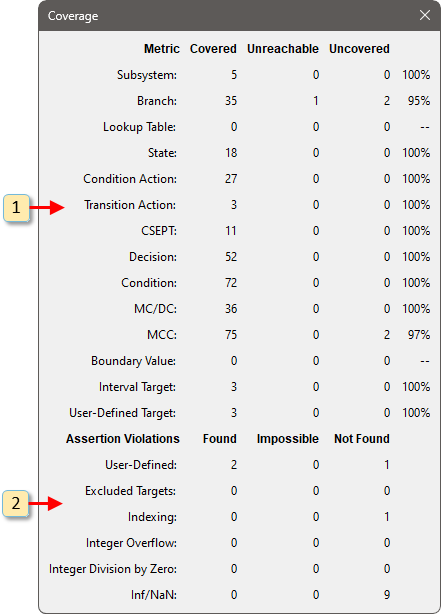
Fig. 8.15 The Coverage Summary dialog.#
8.7.2. Coverage Information in the Main Panel#
Selecting Coverage > Show Details causes uncovered targets to be drawn in red in the main panel. Targets that have been covered are drawn in black. Hovering over an exercised target will cause a pop-up to be displayed that gives the test and step in which the target was first executed. This type of test and step coverage information is displayed with a message of the form test/step. A “.” appearing in the test position ./step denotes the current simulation run which has not yet been added to a test suite. If -/- is displayed, the target has not yet been covered.
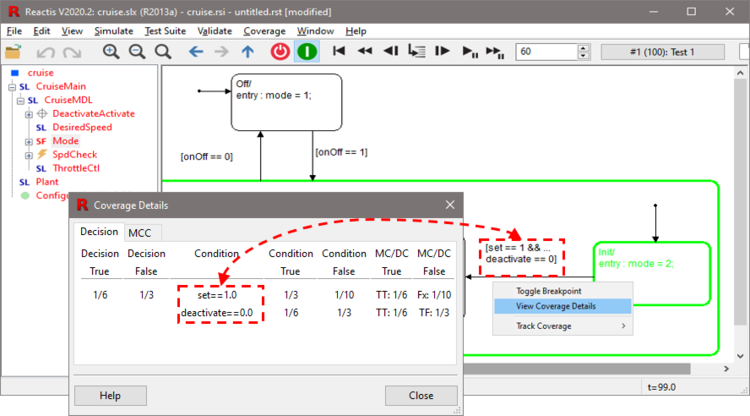
Fig. 8.16 Viewing MC/DC-related coverage information for a Stateflow transition.#
For items included in the MC/DC coverage measure (Simulink Logic and If blocks and Stateflow transition segments whose label includes an event and/or condition) or CSEPT coverage (states, transition segments) , detailed coverage information may be obtained by right-clicking on the item and selecting View Coverage Details. A dialog similar to that in Figure 8.16 will appear and give coverage information for decision coverage, condition coverage, and MC/DC.
The table in this figure describes coverage for the decision:
set == 1 && deactivate == 0
This decision contains the following two conditions:
set == 1deactivate == 0.
Conditions are the atomic boolean expressions that are used in decisions. The first two columns of the table list the test/step information for when the decision first evaluated to true and when it first evaluated to false. A value -/- indicates that a target has not yet been exercised. The third column lists the conditions that make up the decision, while the forth and fifth columns give test/step information for when each condition was evaluated to true and the false.
MC/DC Coverage requires that each condition independently affect the outcome of the decision in which it resides. When a condition has satisfied the MC/DC metric in a set of tests, the sixth and seventh columns of the table explain how. Each element of these two columns has the form bb:test/step, where each b reports the outcome of evaluating one of the conditions in the decision during the test and step specified. Each b is either T to indicate the condition evaluated to true, F to indicate the condition evaluated to false, or x to mean the condition was not evaluated due to short circuiting.
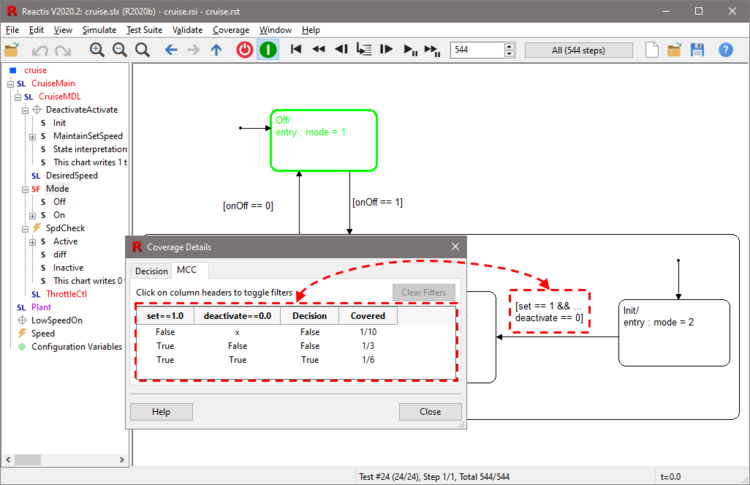
Fig. 8.17 Viewing MCC coverage information for a Stateflow transition.#
In addition to MC/DC, Reactis can also measure Modified Condition Coverage, or MCC. MCC targets every possible combination of conditions within a decision, so that a decision containing N conditions can result in as many as 2N MCC targets, although the actual number may be less if short-circuited evaluation is used.
Figure 8.17 shows the MCC coverage details for a Stateflow transition. The MCC coverage details are in the form of a table where all except the last 2 columns correspond to conditions, and each row corresponds to a single MCC target. For each target, all conditions have one of three possible values:
- True.
The condition is true.
- False.
The condition is false.
- x.
The condition is not evaluated due to short-circuiting.
The last two columns of the MCC details contain the result of the decision and the test/step when the target was covered.

Fig. 8.18 Filtering MCC coverage information for a Stateflow transition.#
As shown in Figure 8.18, MCC coverage details can be filtered by clicking on the column headers. A filtered column header is indicated by a prefix of T:, F:, or x:, which correspond to the column values True, False, and x, respectively. Clicking on a column header advances the filter setting for that column to the next feasible value, eventually cycling back to unfiltered. The Covered column includes one additional prefix E: to display the targets that have been excluded (see the Excluding Individual Targets section). All columns can also be reset to the unfiltered state at any time by clicking on the Clear Filter button. Note that the individual filters for each column are combined exclusively (i.e., using the Boolean and operator), so that only targets which satisfy all active filters are shown. Figure 8.18 (c) shows the results of setting the filters for set==1.0 and deactivate==0.0 to true. In this case, the only target shown is the one where both of these conditions are true.
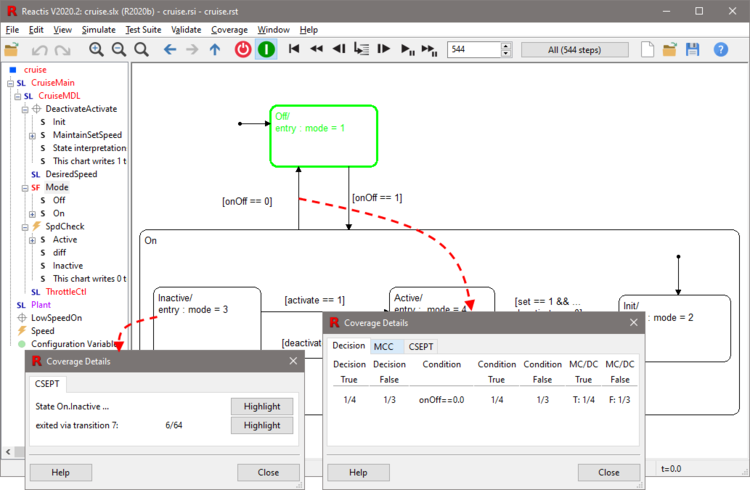
Fig. 8.19 If a Stateflow state or transition segment has CSEPT targets, then you can right click on the state or transition and select View Coverage Details to view the relevant CSEPT coverage information.#
Figure 8.19 shows the Coverage Details dialog for Child State Exit via Parent Transition (CSEPT) coverage . For the full definition of this metric see the Child State Exit via Parent Transition section. Conceptually CSEPT tracks whether each child of a Stateflow state S has been exited by each transition that causes S to exit. In the figure, CSEPT tracks that each of the states Inactive, Active, and Init have been exited as a result of the transition from On to Off firing.
Right-clicking on a (non-top-level) state S and selecting View Coverage Details causes the display of a dialog that lists the transitions that cause the parent of S to exit. Clicking the Highlight buttons in the dialog lets you identify the state and transitions from the list in the main panel.
Right-clicking on a transition segment that is part of a transition T that causes a parent state to exit and selecting View Coverage Details causes the display of a dialog that lists the child states that can be exited as a result of T firing. Clicking the Highlight buttons causes each transition to be highlighted in the main panel.
8.7.3. The Coverage Report Browser#
The Coverage-Report Browser enables you to view detailed coverage information and export the reports in HTML format. It is invoked by selecting Coverage > Show Report and is described in detail in The Reactis Coverage Report Browser chapter.
8.8. Exporting and Importing Test Suites#
8.8.1. Exporting Test Suites#

Fig. 8.20 The Reactis test-suite export window.#
The export feature of Reactis allows you to save .rst files in different formats so that they may be processed easily by other tools. The feature is launched by selecting Test Suite > Export… when a test suite is loaded in Simulator. You specify the format and name of the exported file in the General tab of the Export Dialog (Figure 8.20). For some export formats, other tabs appear in the dialog to enable you to fine-tune exactly what is included in the exported file. In the case of .csv files, you may specify a subset of tests from the test suite to be exported as well as which data items (inputs, outputs, test points, configuration variables) should be included in each test step. The following formats are currently supported:
- .m files:
Suites may be saved as MATLAB scripts so that they may be run using The MathWorks’ Simulink / Stateflow environment. The Executing Test Suites in Simulink section describes how to execute exported
.mfiles in Simulink. That section describes how thersRunTestsutility distributed with Reactis enables you to load an exported.mfile, execute the tests therein, and report any differences between the values computed by Simulink for outputs and the values stored in the tests. When exporting to this format you have a choice of exporting fixpoint values on harness input or output ports as either “double” values (easier to read) or Simulink fixpoint objects (more precise). Enumerated values can be exported as either their underlying integer values or instances of their enumeration objects.
- .mat files:
Suites may be saved as
.matfiles so that they may be run using The MathWorks’ Simulink / Stateflow environment. This binary format enables values in tests to be represented with more precision than is possible in the ASCII-based.mfile format. When running a Reactis-generated test suite on a Simulink model, the higher precision of test data helps avoid some rounding errors. The Executing Test Suites in Simulink section describes how to execute exported.matfiles in Simulink. ThersRunTestsutility works for.matfiles exactly as described above for.mfiles. When exporting to this format, fixpoint values will always be exported as “double” values and enumerated values will be exported as their underlying integers.
- .mat files (for FromWorkspace blocks):
Suites may be saved in an alternative
.matfile format so that they may be run using The MathWorks’ Simulink / Stateflow environment on a modified version of the model that uses ‘FromWorkspace’ blocks in place of harness inports. The Executing Test Suites in Simulink section describes the contents of these exported files and how to execute them in Simulink.
- .csv files:
Suites may be saved as comma separated value (CSV) files. The different tabs of the export dialog enable you to specify which data from a test suite should be exported. Namely, you can indicate which tests should be exported and for each test step which inputs, outputs, test points, and configuration variables should have values recorded.
The first line of an exported file will contain a comma separated list of the names of the model’s input and output ports, test points, and configuration variables that were selected for export. A column recording the simulation time has the label t. Any names containing non-alphanumeric characters will be surrounded by double quotes (”) and newlines in names will be translated to \n. Subsequent lines contain either:
A comma-separated list of values that includes one value for each item appearing in the first row. The order of the values in a row corresponds to the order the items appeared in the first line. Each such line contains the values for one simulation step.
An empty line signaling the end of a test.
The options for configuring the CSV output work as follows:
- Compress output.
If selected, then test steps will be omitted if no item that would be recorded in the step other than the simulation time is different from the corresponding value in the previously recorded step. This is especially useful when exporting only inport data for a test in which inputs are held constant for a number of steps.
- Export vector, matrix and bus elements in separate columns.
If not checked, when a port carries a vector or bus signal, then the values of the signal appear within double quotes (”) as a comma-separated list. If checked then each of these items will be placed in its own column and there is an option for export indices: 0-based, 1-based, or legacy. Legacy is available to be used for scripts prior to the V2023.2 version, where Reactis used 0-based indexing for arrays (i.e. arrays of buses or array configuration variables) and 1-based indexing for non-bus vectors/matrices on input or output ports.
- Prepend ‘|’ to configuration variable names (to prevent ambiguities).
This option helps avoid problems if a port and configuration variable have the same name.
- Export .rsi file revision.
If checked, an extra column labeled RsiRevision is included in the exported CSV. In this column the first step of the first test lists the current revision of the
.rsifile.- Export Reactis version.
If checked, an empty column is added after the last data column, and another column after that which will include the label
ReactisVersionin the first row, and the Reactis version used to export in the second row (e.g. V2025).- Export each test to a separate file.
Instead of exporting to a single file and separating tests by an empty line, each test is exported to a separate file. The file name specified in the Output File box will be used as the base file name to which
*N*.csvwill be appended to form the file name (where N is the test number).- Export test names to column.
If checked, a column with the specified name as a header is included. For each test step, the column contains the name of the test.
- Export test point column headers as.
Selects the column header content for exported test points: “name” will show the test point’s name as specified in the test point parameter dialog, “location” will show the test point’s complete path within the model hierarchy. Select “legacy” for to use the same header format as Reactis V2016.2 and earlier for backwards compatibility.
- Export boolean values as.
Select whether boolean values will be exported as integers (0, 1) or doubles (0.0, 1.0).
- Export enumerated values as.
Lets you specify each enumerated value should be exported as its underlying integer or as its name.
- Export fixed-point values as.
Lets you specify whether each fixed-point value should be exported as its real-world value (default) or as its stored integer.
- Export floating-point values as.
Lets you specify whether each floating-point value should be exported as its real-world value (default) or as a hexadecimal integer that encodes the value in the IEEE 754 floating-point format. A single-precision value is a 32-bit integer with the prefix ‘0fx’. A double-precision value is a 64-bit integer with the prefix ‘0dx’.
- Significant digits for floating-point values.
Lets you specify the number of significant digits to be used when exporting floating-point values as real-world values.
8.8.2. Creating Test Suite Templates#
A test suite template is a CSV file which contains a header row naming the inputs, outputs, test points, and configuration variables of a model, but does not contain any data. Generating a template can assist with hand crafting tests using the CSV format that can be imported into Reactis. You generate a template then load it into Excel or a text editor to fill in the desired test data.
To create a template, start Simulator and then select Test Suite > Create CSV Template…. This will open a dialog similar to the one shown in Figure 8.21.

Fig. 8.21 The Create Test Suite CSV Template dialog.#
The Create Test Suite CSV Template dialog lets you configure the template to be created by specifying:
- Output File
name of the file to be created.
- Prepend ‘|’ to configuration variable names (to prevent ambiguities)
can be useful to distinguish which columns of the template are configuration variables.
- Place vector, matrix and bus elements in separate columns
When selected, this will produce a separate column for each array element. The column names will include the array index values. The radio selector lets you choose between 0-based or 1-based indexing, i.e. should the columns be labeled a(0), a(1), a(2), … or a(1), a(2), a(3)….
If this option is not selected, then a single column will be created for an array value, with the expectation that cell in the column will contain the value for the entire array.
- Include column for test names
When selected, this will add an extra column using the name in the text box to the right of the checkbox. As shown in Figure 8.21, the default name is REACTIS_TEST_NAME. This column is expected to contain a string value for the first row of each test which gives the name assigned to the test. The name can be left empty.
8.8.3. Importing Test Suites#
Reactis can also import tests and add them to the current test suite. Test suites may be imported if they are stored in the Reactis’s native .rst file format or in the comma separated value (CSV) format (described above) that Reactis exports. The import feature is launched by selecting Test Suite > Import… when Simulator is enabled.
To execute a test suite in Simulator, the test suite must match the executing model. A test suite matches a model if it contains data for the same set of inports, outports, test points, and configuration variables as the model. If an externally visible data item (inport, outport, test point, or configuration variable) is added to or removed from a model, then previously constructed test suites will no longer match the new version of the model. The import facility gives you a way to transform the old test suite so that it matches the new version of the model. Such remapping is also available when importing .csv files.

Fig. 8.22 The Import Test Suite dialog allows you to import external test data (comma separated value format) and if necessary transform the data to produce a test suite that matches a model. The import facility is also used to transform an .rst file to make it match a model.#
The Import Dialog, shown in Figure 8.22,
is used to specify how test data should be remapped during import. The dialog
contains a General tab and a tab for each type of data item stored in a test suite
(inputs, outputs, test points, configuration variables). In the case of .csv files,
the import dialog also contains a tab Not Imported that lists items present in the
CSV file that are not scheduled to be imported into the new test suite. When an .rst
file includes an item not scheduled to be imported, it is placed at the bottom of
the appropriate tab. For example, if a test suite contains an inport X and is
being imported with respect to a model that has no inport X, then X will
appear at the bottom of the Input Ports tab and be highlighted in yellow.
The General tab has three drop-down boxes to define how the file is imported:
- Unassigned items
In most cases a data item X in the test suite being imported will map to an item with the same name in the model. If the model contains an item not found in the test suite being imported, then the corresponding Suite column entry will be listed as Not Assigned and be highlighted in yellow (as shown in Figure 8.22 for inport brake). On the General tab, a drop-down box allows you to select Zero or Random. This specifies the value to be used for Not Assigned items. If a type (e.g. enumeration or fixed-point) or type constraint (e.g., the set 1,2,3) does not allow a zero value, then the value closest to zero allowed by the type is used. If Random is selected for unassigned items, then unassigned inputs will receive a new random value for each step. If Random is selected an unassigned items, then unassigned configuration variables will receive a new random value for each test, remaining unchanged throughout the test. When importing Buses/Arrays, all leaf elements are set to the Random/Zero value as selected. The range of the random values will be the full range of the type constraint of the input. If there is no type constraint, the random value will be the full range of the input type.
- Inport test names from column
Allows you to choose a column that contains test names. If no column is selected, default test names (Test 1, Test 2, Test 3, etc) are created during import.
- Index base
Allows you to define Index Base to assign import indices: 0-based, 1-based, or legacy. Legacy is available to be used for CSV files created prior to the V2023.2 version, where Reactis used 0-based indexing for arrays (i.e. arrays of buses or array configuration variables) and 1-based indexing for non-bus vectors/matrices on input or output ports.
Each data item tab (e.g. Input Ports) includes a column (e.g. Model Port Name) listing the model items in that category. The Suite column lists items from the file being imported that map to the corresponding model item.
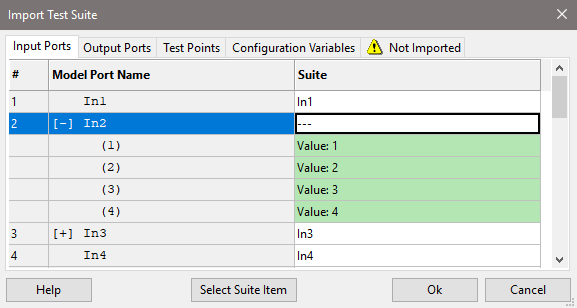
Fig. 8.23 Importing test data into a bus.#
If the model has bus input ports, Import Test Suite, these will be marked with a [+] or [-] to the left of the port name. If a name is preceded by [+], this indicates that there are hidden sub-components which are not currently being displayed. Conversely, if a name is preceded by [-], this indicates that there are sub-components which appear immediately below the name, and are indented to indicate their status as a sub-component. Left-clicking on the name of a bus input toggles the display of its sub-components. Figure 8.23 shows a test suite being imported into a model containing a bus input.
Finally, note that when loading a test suite stored in the pre-V2006 format, the test suite will be automatically converted to the new format.
8.9. Updating Test Suites#
When a test suite is loaded in Simulator, this feature can be invoked by selecting menu item Test Suite > Update… to open the dialog shown in Figure 8.24. The dialog offers two methods for updating an existing test suite (.rst file):
The first method Update using Reactis executes a test suite in Reactis, updates items (inputs, configuration variables, test points, and outputs) as configured by the checkboxes, and writes the modified suite to a new .rst file.
The second method Update outputs using Simulink exports the test suite to .mat format, executes the exported suite in Simulink, updates the test suite to contain the output values computed by Simulink, saves the updated suite to a .mat file or .m file (in the format supported by the Reactis rsRunTests utility).
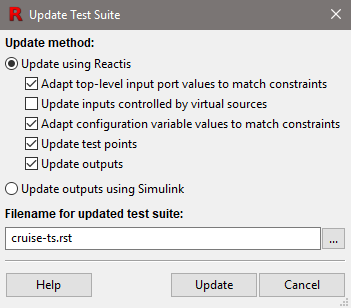
Fig. 8.24 The Update Test Suite dialog offers several options to configure how a test suite is updated.#
8.9.1. Update Using Reactis#
This method creates a new test suite by simulating the current model using inputs from the current test suite, but recording values for outputs and test points generated by the model. Updating the outputs can be useful for updating test suites when a model is modified, but its input ports remain unchanged. The result of invoking this routine with these options selected is a new test suite with the same input values at each step, but with outputs and test points updated (as specified in the dialog) with values generated by the currently loaded version of the model.
Additionally, inputs and configuration variables can also be updated to conform with constraints specified in the .rsi file. When these options are selected, if an input or configuration variable has a test suite value not conforming to its constraint, then the test suite is updated to contain the closest value adhering to the constraint.
The five check-boxes specify what is written to the new test suite as follows:
Contents of new test suite when: |
||
Checked |
Not Checked |
|
Adapt harness input port values to match constraints |
If an input value in the test suite does not conform to the constraint specified for that input in the .rsi file, then convert the input value to the closest value adhering to the constraint. |
Do not change an input value if it violates the input’s constraint. |
Update inputs controlled by virtual sources |
Each input currently controlled by a virtual source shall be updated with the values computed by the controlling virtual source at each step as the tests execute. |
The values for each input shall be those from the original test suite. |
Adapt configuration variable values to match constraints |
If a configuration variable value in the test suite does not conform to the constraint specified for that variable in the .rsi file, then convert the value to the closest value adhering to the constraint. |
Do not change a configuration variable value if it violates the variable’s constraint. |
Update test points |
Each test point shall be updated with the value computed by the model for the test point as the tests execute. |
The values for each test point shall be those from the original test suite. |
Update outputs |
Each output shall be updated with the value computed by the model for the output as the tests execute. |
The values for each outport shall be those from the original test suite. |
8.9.2. Update Outports Using Simulink#
This method creates a new test suite by loading the current model in Simulink, executing it (in Simulink) using the input values from the current test suite, and capturing the outputs produced by the model. The inputs and outputs are stored using the .m or .mat format supported by the Reactis rsRunTests utility.
8.10. Model Highlighting#
Simulator renders model diagrams using a number of different colors and line styles to convey information during simulation. In this section, we describe these different drawing styles and their semantics.
Some of the default drawing colors are as follows. During slow, single-step, or mini-step simulation, a model element is drawn in green while it is being evaluated. Selecting Coverage > Show Details configures Reactis to highlight uncovered model elements in red and unreachable model elements in purple. Please refer to the Reactis Coverage Metrics chapter for a description of the different coverage metrics tracked by Reactis.
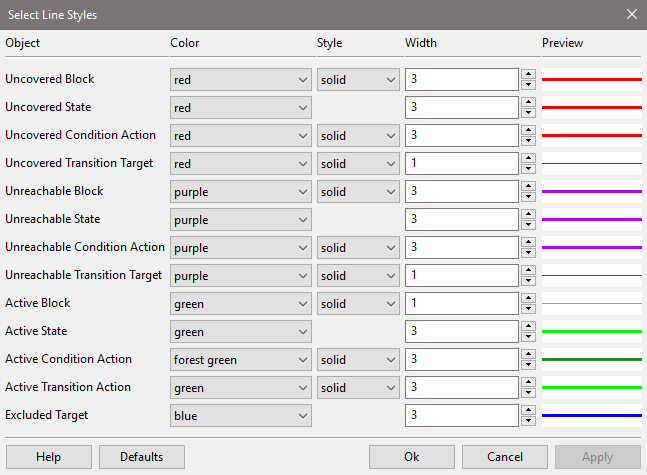
Fig. 8.25 The Select Line Style dialog.#
The dialog shown in Figure 8.25 (invoked by selecting View > Select Line Styles…) enables you to configure how Simulator should draw various diagram elements. Each row in the dialog specifies the rendering of one group of model elements. The different groups of configurable diagram elements are:
- Uncovered Block.
A Simulink block B is in this group if it has not been fully exercised, i.e. one of the following holds:
B is a block included in the branch coverage metric and at least one of B’s branches remains uncovered.
B is a conditional subsystem that has never been exercised.
B is a logical operator block that has not satisfied the requirements for all MC/DC-related coverage metrics (decision, condition, and MC/DC).
B is a relational operator block and some boundary value has not been exercised.
B is a harness inport and not all boundary values have been exercised.
B is a block with saturate on integer overflow enabled and some boundary value has not been exercised.
B is a Lookup table and has uncovered lookup targets.
B is an uncovered user-defined target.
B is a violated assertion.
- Uncovered State.
A Stateflow state is in this group if it has never been entered.
- Uncovered Condition Action.
A Stateflow transition segment is in this group if it has not met the requirements for condition action coverage. In other words, its condition action has never been evaluated. If a segment has no condition action, then it is considered uncovered according to condition action coverage if its condition has never evaluated to true. Note that a segment with an empty condition is assumed to evaluate to true whenever the segment is evaluated during simulation.
- Uncovered Transition Target.
A Stateflow transition segment is in this group if it has met the requirements for condition action coverage, but has not met the requirements for one of the other coverage metrics associated with transition segments. These metrics include transition action coverage, decision coverage, condition coverage[3], MC/DC, and CSEPT.
- Unreachable Block.
A Simulink block B is in this group if Reactis has determined that some aspect of the block’s behavior can never happen and that all behaviors that are possible have occurred. If some reachable behavior has not occurred, then the block is considered a member of the “Uncovered Block” group and rendered accordingly.
- Unreachable State.
A Stateflow state is in this group if it can never be entered.
- Unreachable Condition Action.
A Stateflow transition segment is in this group if it can never meet the condition action coverage requirement.
- Unreachable Transition Target.
A Stateflow transition segment is in this group if it has met the requirements for condition action coverage, but cannot meet the requirements for one of the other coverage metrics associated with transition segments.
- Active Block.
A Simulink block is in this group if it is currently being evaluated.
- Active State.
A Stateflow state is in this group if it is currently active.
- Active Condition Action.
A Stateflow transition segment is in this group after its condition evaluates to true and until the next model element is highlighted as active.
- Active Transition Action.
A Stateflow transition segment is in this group as it is firing as a part of a transition.

 in a scope to save the current configuration of the scope as a signal group (set of signals along with the scope settings for displaying them).
in a scope to save the current configuration of the scope as a signal group (set of signals along with the scope settings for displaying them). , window
, window